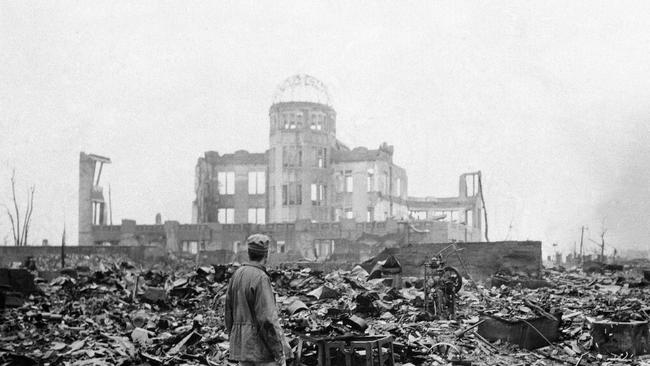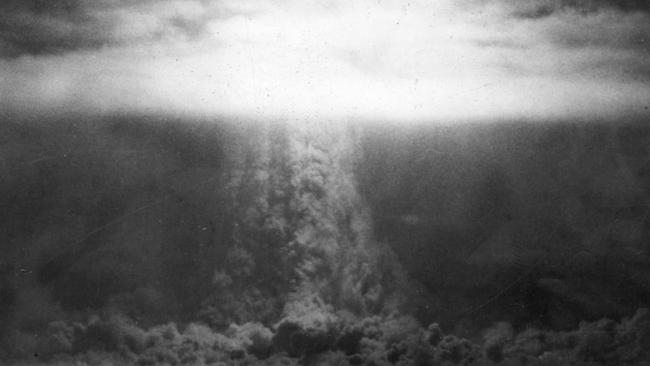Way we were: England drops nuclear bombs in outback
Almost two centuries after Britain sent the First Fleet to Australia with the refuse of its prison system, they began sending us their nuclear fallout as well, writes Grantlee Kieza.
Opinion
Don't miss out on the headlines from Opinion. Followed categories will be added to My News.
AUSTRALIA was once so worried about a pandemic it feared more than coronavirus that it let England drop nuclear bombs on us.
Between 1952 and 1963 Britain detonated a dozen nuclear devices in Australia, with two of the bombs more powerful than those the Americans used to annihilate the Japanese cities of Hiroshima and Nagasaki to end World War II.
Radioactive material caused some “radioactive rain” to land on Brisbane and Queensland country areas and a third of the veterans involved in the nuclear testing died of cancers in their 50s.

No sooner had World War II ended when a longer more insidious Cold War began between America and her allies and the increasing threat of Communism that was taking root in much of the world.
The destruction of Hiroshima and Nagasaki demonstrated the horrific power of nuclear weapons and Britain was intent on flexing its military muscles to stave off any threat of Stalinism crossing the English Channel.
Britain needed somewhere to test its nuclear bombs and the further away from Britain the better, what with all those mushroom clouds and radioactive waste.
So almost two centuries after they sent the First Fleet to Australia with the refuse of its prison system, they began sending us their nuclear fallout as well.
On October 3, 1952, Britain tested its first atomic weapon in Operation Hurricane, detonating a plutonium implosion device inside a ship in a lagoon at the Montebello Islands off Western Australia.
The fallout cloud rose to 3000 metres and was blown out to sea, as planned, but it later reversed direction and blew over the Australian mainland. Low levels of radioactivity were detected in Queensland.
The islands remained a prohibited area for 40 years.
In 1953 the first nuclear tests on the Australian mainland were carried out at Emu Field in South Australia’s Great Victoria Desert.
The Australian Minister for Supply, Howard Beale, defended Australia’s role as the guinea pig for Britain’s nuclear program by saying: “England has the know how; we have the open spaces, much technical skill and a great willingness to help the Motherland. Between us we should help to build the defences of the free world.’’
Due to radioactive contamination Emu Field was eventually declared unsafe for further testing.
On 30 November 1954, the front page of The Courier-Mail told readers that while British experts were looking for a new site “Australia is insisting that (it) will be sufficiently remote to provide absolute safety.

“Britain has assured the Australian Government that, because of the smaller explosions planned for next year, there will be no danger of radioactivity if a more accessible site is used.
“Next year’s tests will be part of the British program for producing atomic warheads for guided missiles and atomic shells for field and naval guns.’’
Another remote site in South Australia was chosen, Maralinga, and the traditional Aboriginal owners of the land, the Maralinga Tjarutja, were forcibly removed.
On October 11, 1956, an RAF Vickers Valiant dropped an atomic bomb on Maralinga from a height of 11,000m. Authorities said only a “negligible amount of fallout’’ reached the rest of South Australia, Victoria and New South Wales.
The Maralinga site was left contaminated with radioactive waste, and a clean-up was attempted in 1967 but significant radiation hazards still existed and another clean-up, costing $108m, was completed in 2000.
In 1994, the Australian government paid compensation amounting to $13.5 million to the Maralinga Tjarutja people and gave them back their land – damaged as it was - in 2014.


